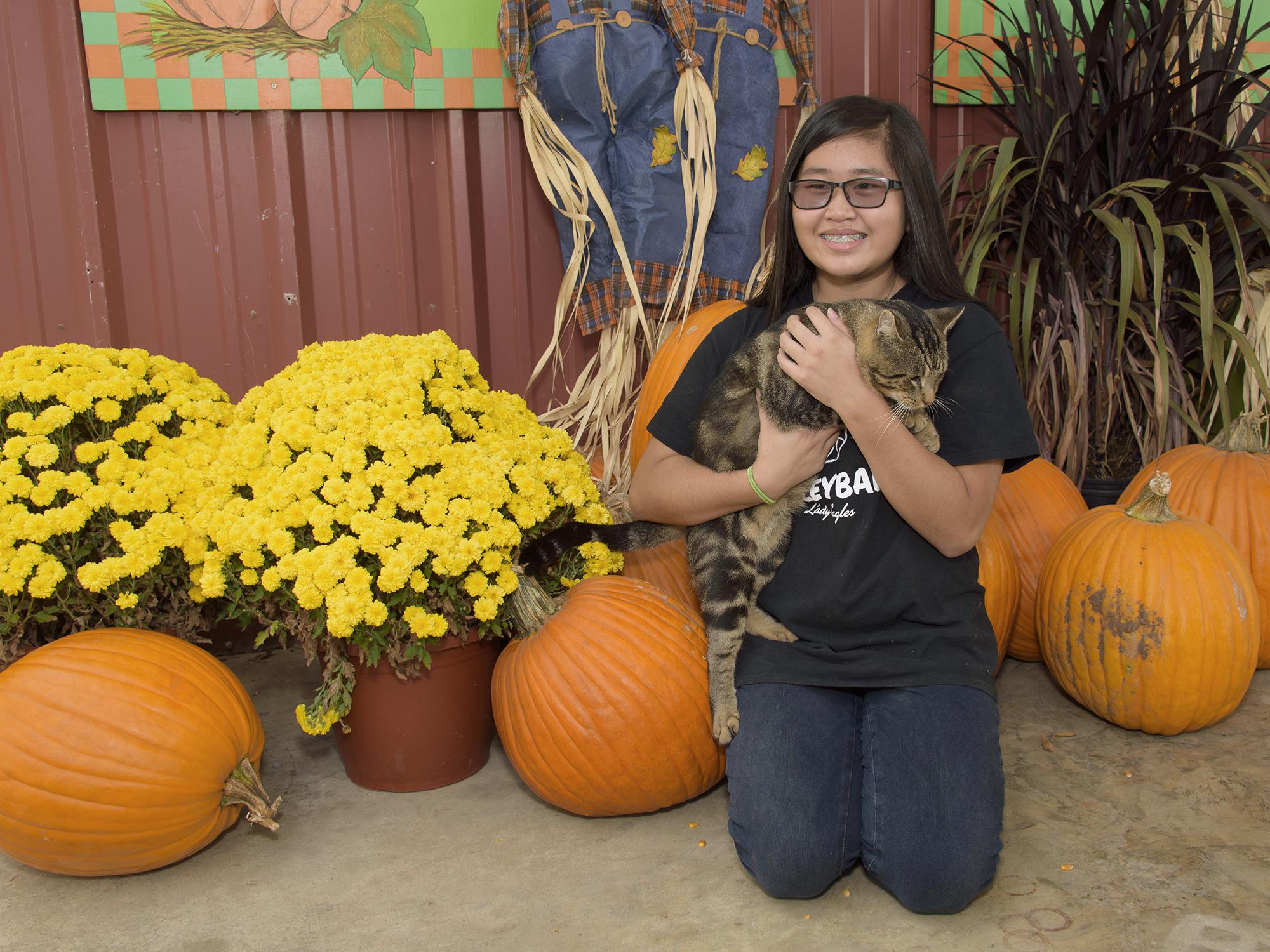Information Possibly Outdated
The information presented on this page was originally released on October 21, 2016. It may not be outdated, but please search our site for more current information. If you plan to quote or reference this information in a publication, please check with the Extension specialist or author before proceeding.
State's pumpkin growers benefit from dry weather
STARKVILLE, Miss. -- Mississippi's October weather has offered more than enough of the most vital tonic pumpkins need for growth: full sunlight.
But the state has lacked another key element: water. Fortunately, the majority of the state’s pumpkin fields are irrigated, so the ongoing drought has had little effect on this year’s plentiful harvest.
However, nonirrigated pumpkin acreage has seen better days, said Casey Barickman, an assistant professor at the Mississippi State University North Mississippi Research and Extension Center in Verona.
“Most vegetable growers in Mississippi have access to water for irrigation, making dry years like 2016 tolerable,” Barickman said. “The dry weather has been good to pumpkin growing conditions because it has decreased the incidence of fungal and bacterial pathogens. However, the hot and dry weather has been challenging because of the increased numbers of insect pests, such as squash bugs and cucumber beetles.”
Because this year’s harvest is stronger than average, U.S. prices are slightly below normal, though consumers continue to buy pumpkins at a steady clip as fall holidays approach. The average wholesale price is 11 to 12 cents per pound and $100 to $115 per 36-inch bin. Wholesale jack-o-lanterns are selling for $1 to $2, which is in line with five-year averages.
“Retail and wholesale prices for all pumpkins are back to normal after a devastating wet season last year, which saw pumpkin prices climb very high,” Barickman said. “There continues to be a high demand for pumpkins in the U.S., which is keeping prices steady.”
Mississippi is not a major pumpkin producer. Small, local growers produce most of the state’s crop. This localized production makes it harder to track Mississippi pumpkin acreage, compared with states where the crop has a larger presence.
Pumpkins grow best when temperatures are below 92 degrees during the day and 60 to 70 degrees at night. Adequate moisture, pollinators and good soil fertility are also needed. Home gardeners should rely on pumpkin varieties with good disease resistance and pick land that is suitable for growing the fruit.
“In our research pumpkin trials, we have had very good results with powdery-mildew-resistant pumpkin varieties,” Barickman said. “These varieties consistently have better pumpkin quality and higher yields because they maintain their foliage longer, giving the pumpkin fruit more nutrients for growth and protective coverage from the sun.”
Extension horticulturalist David Nagel said the lack of moisture seen during much of the crop’s growing season allowed it to avoid major issues in 2016.
“Disease pressure is strongly influenced by humidity and moisture,” Nagel said. “Virus problems vectored by insects can be devastating, but there has not been a serious outbreak this year.”
Nagel said the “Southeastern U.S. Vegetable Crop Handbook” is a valuable resource for helping pumpkin growers select the most cost-effective options for their situations. It will help them plan for which varieties to plant. The book also rates the effectiveness of various fungicides. Barickman recommended a three-year vegetable crop rotation to decrease the incidence of pest and disease.
“Have a solid pest and disease management plan that consists of regular scouting and monitoring strategies, a preventative pesticide spray schedule that rotates pesticides for maximum efficacy and reduction of resistance, and continuing education on pesticide safety and regulations,” Barickman said. “Growers should work with their local Extension agents and specialists for up-to-date information that will help them have successful growing seasons into the future.”
For more information on growing pumpkins for the home garden, visit http://bit.ly/2es5vY7.



